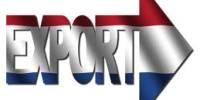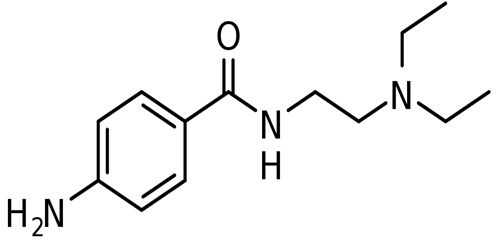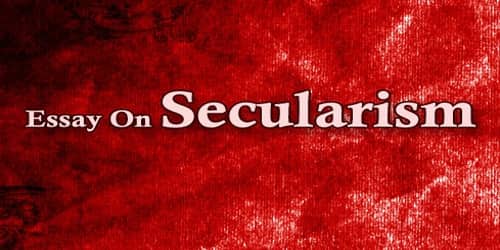Growth in Different Businesses of TBL:
The Trust Bank has performed well in last seven years where there has been significant growth in different segments of the Bank. The overall performance of the Bank is discussed along with graphical presentation in the data analysis part of this report. Here growth for some of the different business of TBL is shown.
Growth in Assets:
Total assets of the bank (excluding contingent liabilities) have increased from TK.3153.04 million in 2005 to TK 30,382.22 million in 2011.
|
Asset Growths
2011 | 2010 | 2009 | 2008 | 2007 | 2006 | 2005 | |
Asset | 30,382.22 | 21060.77 | 14807.90 | 12060 | 7858.83 | 3424.33 | 3153.04 |
Source: Annual Report of TBL, 2005-2011
Asset Growth
|
Growth in Deposits:
Over the last seven years the deposit of the bank is increasing at a large rate. In the last seven years data we can see that the bank has collected deposits in different savings criteria. Among those the high cost fund that is in Fixed Deposits is larger than any other savings criteria.
Deposits
| Year | Current Deposits / Other A/c | Savings Deposits | Fixed Deposits | Deposits under Schemes | Total |
| 2005 | 240.81 | 105.72 | 1316.72 | 10.38 | 1673.63 |
| 2006 | 473.03 | 112.92 | 2707.37 | 64.5 | 3357.82 |
| 2007 | 917.68 | 228.6 | 3910.61 | 101.22 | 5158.11 |
| 2008 | 1219.14 | 365.39 | 5133.88 | 445.26 | 7163.67 |
| 2009 | 1630.32 | 597.31 | 9959.72 | 976.78 | 13164.13 |
| 2010 | 2207.72 | 1456.59 | 15198.95 | 1098.52 | 19961.78 |
| 2011 | 3550.79 | 2258.59 | 20947.34 | 1754.25 | 28510.97 |
Source: Annual Report of TBL, 2005-2009
Deposits Growth
|
Deposit Mix
Growth in Loans and Advances:
Loans and advances have increased to Tk. 18,682.16 million in 2011 than that of 1603.95 million in 2005. Import, export trade finance and working capital for industrial units were the major lending areas of the bank.
Loans and Advances
Category | 2005 | 2006 | 2007 | 2008 | 2009 | 2010 | 2011 |
Total Loans & Advances | 1603.95 | 1897.63 | 4358.31 | 6804.45 | 9738.32 | 13188.09 | 18682.16 |
Source: Annual Report of TBL, 2005-2011
Loans & Advances
Growth in Net Profit:
TBL’s increased operating efficiency and increased revenue both are the reason behind the growth in net profit.Net Profits
| Year | 2005 | 2006 | 2007 | 2008 | 2009 | 2010 | 2011 |
| Net Profit | 25.96 | (140.16) | 68.14 | 175.98 | 121.29 | 263.16 | 239.03 |
Source: Annual Report of TBL, 2005-2011
Net Profit
|
Ratio Analysis:
In this section analysis has been made through UBPR. The following ratios indicate the profitability, efficiency or risks measures for the bank.
PROFITABILITY RATIO
Return On Assets (ROA):
Return on assets (ROA) is measured by the ratio of net income and total assets. By the returning assets, if the bank’s net income increases the profitable ratios of the bank increases. Also by measuring the ROA, it can be determined that what percentage of the total asset is the net income i.e. how much return are they getting over the assets. TBL is giving continued emphasis on quality assets, which resulted in providing a sound asset base for the bank.
Return on Asset
2011 | 2010 | 2009 | 2008 | 2007 | 2006 | 2005 | |
Return on Asset | 0.79% | 1.24% | 2.24% | -3.56% | 1.13% | 1.79% | 0.82% |
Source: Annual Report of TBL, 2005-2011 Return on Asset
|
Return On Equity (ROE):
Return on Equity (ROE) represents earning after tax over equity. The ROE (net income divided by equity capital) is the most important measurement of banking returns as well as a company’s returns because it is influenced by how well the bank has performed on all other categories and indicates whether a bank can compete for private sources of capital in the economy. The higher the ROE, the better for the bank, as they are getting higher amount of net income over the equity. The Trust Bank Ltd. has maintained significantly high ROE throughout the years of its operations. In 2011 the ROE dropped to 14.45% from 24.51% in 2010 due to increase in no. of shares.
Return on Equity
| 2011 | 2010 | 2009 | 2008 | 2007 | 2006 | 2005 |
Return on Equity | 14.45% | 24.51% | 20.30% | 19.62% | 30.79% | 19.03% | 4.03% |
Source: Annual Report of TBL, 2005-2011
Return on Equity
|
Export:
The export earning of the TBL from the export related services has increased to 4224 million in 2011 from Tk 22.60 million in 2005.
Export
| 2005 | 2006 | 2007 | 2008 | 2009 | 2010 | 2011 |
Export in million Taka | 22.60 | 71.10 | 2761 | 2636 | 2911 | 2884 | 4224 |
Source: Annual Report of TBL, 2005-2011
EXPORT
The following graph shows the growth in export earning.
|
IMPORT:
The import earning of the TBL from the import related services has increased to Tk 17,683.17 million in 2011 from Tk 625.90 million in 2005.
IMPORT
| 2005 | 2006 | 2007 | 2008 | 2009 | 2010 | 2011 |
IMPORT | 625.90 | 1349.20 | 327 | 8542 | 9746 | 11483 | 17683.17 |
Source: Annual Report of TBL, 2005-2011
FOREIGN REMITTANCE
The foreign remittance of the TBL is increased to TK. 2612 million in 2011 from Tk 765 million in 2010. This indicates a 241% increase in foreign exchange performance from the previous year. The following graph shows the growth in the foreign remittance:
Foreign remittance
| 2005 | 2006 | 2007 | 2008 | 2009 | 2010 | 2011 |
foreign remittance | 22 | 46 | 151.30 | 96 | 279 | 765 | 2612 |
Source: Annual Report of TBL, 2005-2011
Credit Deposit Ratio
Credit Deposit ratio is used to examine to what extent distributive efficiency effects good profitability. If advance increase and if it can be deployed in profitable ends it will increase the profitability.
Credit Deposit Ratio
| 2011 | 2010 | 2009 | 2008 | 2007 | 2006 | 2005 |
Credit Deposit Ratio | 68.93% | 69.46% | 76.65% | 73.04% | 67.21% | 63.44% | 62.81% |
Source: Annual Report of TBL, 2005-2011
Credit Deposit Ratio
|
Loan Ratio:
The loan ratio indicates the extent to which assets are devoted to loans as opposed to other assets, including cash, securities and plant and equipment.
The higher Net loan ratio is a better indicator for any bank. Over the last seven years the bank’s loan ratio has increased at a significant rate. It indicates all the assets of the banks are performing well.
Loan ratio
| 2005 | 2006 | 2007 | 2008 | 2009 | 2010 | 2011 |
Loan Ratio | 43.53% | 58.93% | 55.45% | 56.42% | 65.87% | 70.87% | 61.49% |
Source: Annual Report of TBL, 2005-2011
|
Performance at a Glance
Taka in Million
| Particulars | 2005 | 2006 | 2007 | 2008 | 2009 | 2010 | 2011 |
| Authorized capital | 1000 | 1000 | 1000 | 2004 | 2004 | 2004 | 2004 |
| Paid up Capital | 250 | 350 | 350 | 500 | 500 | 500 | 1666.67 |
| Share money Deposit | – | – | 150 | 200 | 200 | 200 | – |
| Statutory Reserve | 10.98 | 10.98 | 24.60 | 67.88 | 112 | 214.67 | 330.63 |
| Retained Earnings | 15.34 | -124.82 | -70.30 | 102.81 | 173 | 240.32 | 362.25 |
| Total Shareholders Equity | 276.32 | 236.16 | 454.30 | 870.69 | 991.97 | 1154.99 | 2154.29 |
| Deposit | 2553.72 | 2991.19 | 4483.26 | 9315.18 | 12705 | 18985.95 | 27101.59 |
| Loans and Advances | 1603.95 | 1897.63 | 4358.31 | 6804.45 | 9738.32 | 13188.09 | 18682.16 |
| Import | 625.90 | 1349.20 | 2761.00 | 5628.20 | 7592.50 | 11483 | 17683.17 |
| Export | 22.60 | 71.10 | 326.60 | 930.20 | 2072.40 | 2884 | 4224.55 |
| Foreign Remittance | 22 | 46 | 151.30 | 197.90 | 279 | 765 | 2612 |
| Investment | 363.11 | 493.19 | 1896.92 | 3220.78 | 2448 | 3122.81 | 3785.45 |
| Total Assets | 3153.04 | 3424.33 | 7858.83 | 12060 | 14807.90 | 21060.77 | 30382.22 |
| Total Income | 235.03 | 347.10 | 535.49 | 1046.36 | 1444.60 | 844.18 | 1328.03 |
| Total Expenses | 164.29 | 469.03 | 447.06 | 782.09 | 1148.33 | 297.28 | 474.31 |
| Operating Profit | 70.74 | -121.93 | 88.43 | 264.27 | 288 | 546.89 | 853.71 |
| Total provision | 16.48 | 18.23 | 20.29 | 47.89 | 178 | 39.2 | 273.94 |
| Profit Before Tax | 54.26 | -140.14 | 68.14 | 216.38 | 226.29 | 507.69 | 579.77 |
| Provision for Tax | 28.30 | – | – | – | 105 | 244.54 | 340.74 |
| Net Profit (After Tax) | 25.96 | -140.16 | 68.14 | 216.38 | 114 | 263.15 | 239.02 |
| Return on Equity | 25.60% | 20.54% | 19.47% | 26.56% | 13.02% | 24.51% | 14.45% |
| Return on Assets | 2.24% | -3.56% | 1.13% | 1.79% | .82% | 1.24% | 0.79% |
| Credit-Deposit Ratio | 62.81% | 63.44% | 97.21% | 73.04% | 73.65% | 69.46% | 68.93% |
| Earning per Share | 103.86 | -532.63 | 194.70 | 44.18 | 24.26 | 52.54 | 28.28 |
| No. of Employees | 124 | 138 | 209 | 273 | 359 | 508 | 842 |
| Number of Branches | 10 | 11 | 13 | 15 | 18 | 26 | 31 |
| Cost of Fund % | – | – | – | 9.30 | 9.23 | 8.28 | 8.43 |
SWOT Analysis
SWOT analysis plays a significant part in any company. Any company has some internal strengths and weaknesses, with some external opportunities and threats. Internal factors can be better controlled than external factor as companies do not have any control over it. To survive in the changing environment any company needs to know or be aware of what are its strengths, weaknesses, opportunities and threats so that it take advantages of its strengths and opportunities to eliminate or decrease its weaknesses and threats. In short, SWOT analysis helps to identify what are the capabilities and capacities of a company.
SWOT Matrix
Strength: A company should be aware of its core capabilities and sources of competitive advantages. Core capabilities are the critical skills and processes that an organization executes so well that its reputation builds around it.
Weaknesses: In addition to knowing its strengths, an organization must recognize its limitations. Whether limited by a poorly equipped production facility or a sales force that merely quotes prices and delivery dates, a business that acknowledge its weaknesses forces mangers to assess their processes and systems.
Opportunities: External and internal environments present both driving and restraining forces. Opportunities may occur suddenly. With the past pace of globalization and technology changes, what may initially present itself as an opportunity may become a threat if organizational responsiveness is too slow or not well planned.
Threats: Threats are negative external environmental factors which influences an organization’s decision. External factors are not controlled by the organization and to survive every organization needs to be very alert about its threats and how they can overcome this problem. Organizations should be proactive rather than reactive and should be aware of what are the competitors’ moves and should take necessary action in advance to face those moves.
Strengths
1. Top Management:
The top management of the bank, the key strength for The Trust Bank has contributed heavily towards the growth and development of the bank. The top management officials are army’s highest position holder, so they have a good idea about the current situation.
2. Company Reputation:
The Trust Bank has created a good reputation in the banking industry of the country. Their main customers are army persons. The popularity of this bank is increase day by day also in the general public area.
3. Sponsors:
The Trust Bank has founded by The Army Welfare Trust. The main sponsors for this bank is Sena Kalyan Sangstha. The chairperson of this bank is Chief of Army Staff and directors are also appointed by the sangstha, that’s why the sponsor does not have any problem for the fund.
4. Modern Facilities and Computer:
From the very beginning The Trust Bank tries to furnish their work surroundings with modern equipment and facilities. For speedy service to the customer, The Trust Bank had installed money-counting machine in the teller counter. The bank has computerized banking operation under software called PC banking. More over computer printed statements are available to internal use and occasionally for the customers. The Trust Bank is equipped with telex and fax facilities.
5. Stirring Branches:
From the formative stage of The Trust Bank tried to furnish their branches by the impressive style. Their well-decorated branches gets attention of the potential customer, this is one kind of positioning strategy. The Sena Kalyan Bhaban Branch is also impressive and is comparable of foreign banks
6. Interactive Corporate Culture:
The corporate culture of The Trust Bank is very much interactive compare to other local organization. This interactive environment encourages the employee to work attentively. Science the banking jobs is very much routine work oriented and lovely environment boots up the work capability of the employees.
Weaknesses
1. Limitation of Information System (Flora Bank):
Flora bank is not comprehensive banking software. It is desirable that a more comprehensive banking system should replace PC bank system.
2. Hierarchy Problem:
The hierarchy problem treated as a weakness for The Trust Bank, because the employee will not stay for a long. So there will be a chance of brain drain from this bank to other bank.
3. Advertisement Problem:
There is another weakness for The Trust Bank is advertisement. Their media coverage is so much low that people do not know the bank thoroughl
Opportunities
1. Diversification:
The Trust Bank can pursue diversification strategy in expanding its current line of business. They do not serve not only the army but also the general people.
3.Business Banking
The investment potential of Bangladesh is foreign investors. So EBL has opportunity to expand in business banking.
Threats
1. Contemporary Banks:
The contemporary banks of The Trust Bank like: Dhaka Bank, Dutch Bangla Bank, National Bank, Mutual Trust Bank, Mercantile Bank are its major rivals. They are carrying out aggressive campaign to attract lucrative clients as well as big time depositors. The Trust Bank should remain vigilant about the steps taken by these banks, as these will in turn affect The Trust Bank strategies.
2. Multinational Bank:
The Rapid expansion of multinational bank poses a potential threat to new PCB’s. Due to the booming energy sector, more foreign banks are expected to operate in Bangladesh. Moreover, the existing foreign banks such as HSBC, AMEX, CITI N.A, and Standard Chattered Grindlays are now pursing an aggressive branch expansion strategy. Since the foreign banks have tremendous financial strength, it will pose a threat to local bank to a certain extant in terms of grabbing the lucrative clients.
3. Default Culture:
Default culture is very much familiar in our country. For a bank, it is very harmful. As The Trust Bank is new, it has not faced it seriously yet. However as the bank grows older it might become big problems
4. Recovery Performance:
The recovery percentage of the bank is very good. The recovery percentage of the bank is all-most 99.95% because the credit administration and monitoring of this bank is very good. This bank is monitoring and all the loans are sanction by the high authority whose are high officials of Bangladesh Army, so when they sanction the loan they do inquire on the party. There is another thing of high recovery that this bank is financed by the army welfare trust, so people whose are taking loan from this bank always think that this is an army bank so if I failed to pay then it will be a very big problem for me.
Findings of the study:
In the middle of twenty first century here we are facing a heavy competition with each other. Here everyone is competing with each and every single point. So today’s business institution are moving forward to remember this concept. If any one has a week point than the rival party will take the opportunity and make a problem for the week intuition.
After complete my internship in The Trust Bank I realized that there are many problems and this may be a cause of huge loss or create a barrier for the future prospect. So the bank should taken care it very seriously.
Problems:
The Problems for the Trust Bank’s are:
Advertisement Problem: Today’s world is very much depend on the media, so if the intuitions are not think about the advertisement or any kind of activities which is related some kind of advertisement then it will not earn so much popularity. A media can rise or fall an institution within very short time. So if we see to other developed country then we can find that every business intuition has a huge budget for the advertisement purpose. They do not take this expanse as an expanse; they always take it as a huge investment, because if the people do not know about my organization then how they will do business with us (it dose not matter which type of organization is this), it may be big manufacturing company or a bank. Here I realized for The Trust Bank that they do not have any kind of vast advertisement or any kind of social activities, so most of the people do not have any idea about The Trust Bank. In this case when any one asks that “where are you working?” Then if any one says that in The Trust Bank then people reply at first that “is this Mutual Trust”. So for his or her kind information they have to say no there is a bank called The Trust Bank and it is a bank for the army. This bank is also serving the general people but it is not so much popular, because of advertisement. People thought that this bank’s purpose is to serve only army people. That’s why the bank is not go for a vast banking.
Hierarchy Problem: This is another big problem for The Trust Bank, because in the beginning level there are so many ranks to become a principal officer that it may be the cause of brain drain from this bank to other bank.
If any one join as a J.O than it will take 6-8 years to become a P.O, because promotion is after every 2 years or more than 2 years. So for this reason the young employees who are join here as a J.O they will leave this bank after getting an experience. They will take this bank as a tanning center, because after provision period they will look for another bank, which they can get higher position than this bank.
Limited Number Of Branches: The Trust Bank has only 12 branches allover the Bangladesh. So if they want to do a vast business then they have to increase the number of branches.
Limited Power to the Managers: The managers and other high officials have no power for decision-making. The branch managers have no power to sanction loans. In every bank there is a certain amount that a branch manager can sanction, but in this bank if anyone wants to take a single Taka for loan then the manager has to for the head office approval. Some times it may be the cause of losing customer, because it will take time to sanction a loan.
Other Findings:
In a developing country like Bangladesh the need for domestic resource mobilization is of special importance. Deposit held by the financial intermediaries constitutes the major part of domestic financial resources of the country. The other activities of the bank are chiefly dependent upon the deposits. The higher the amount of deposits, the better is the position banks in financing investment projects, especially large-scale projects. The size of deposit shows that TBL’s growth in deposit is notable over the years indicating a growth rate of 67.47%.
(i) Loan and advance are vital to finance the projects. An appropriate credit distribution system and monitoring will ultimately lead to the profit maximization of banks. It is evident from that the size of TBL’s loans and advances are increasing over the years. It indicates more earning for the bank. It shows a positive growth rate.
(ii) Profit is the simplest and most convenient measuring rod for appraising the performance of the banks as they deal with finance. The survival and sustained growth are possible when there is a regular flow of profit. Above all, the service value being intangible profit may be the justification of the banks from the financial aspect. Net profit figures show the absolute amount of profits. Trust Bank Ltd. has a positive growth rate in Net Profit. It also indicates a positive trend.
(iii) Return on Asset (ROA) shows that the bank has maintained a positive ROA through 2008 to 2011. The profitability of the bank gradually increased and attained highest ROA of 1.79% in 2008. The ROA of 2011 is lower than 2010, this is because of lower growth in net income compare to asset growth. The trend of ROA is positive and the compound growth rate shows that every 100 taka utilized results a positive growth of ROA of Tk. 0.4612.
(iv) Return on Equity (ROE) measures the efficiency with which common shareholder’s equity is being employed within the firm. The higher the ROE, the better for the company, as they are getting higher amount of net income over the equity. Trust Bank Ltd. has maintained significantly high ROE throughout the years of its operations, which indicates a positive trend. Although it is seen that in 2011 ROE dropped to 14.45% from 24.51% in 2010. This is because of no. of shares increased in 2011.
(v) Productivity has been measured in terms of the ratio of operating revenue to operating expenditure. If income substantially outweighs expenditure, the productivity of the bank is good. The bank shows a positive trend in terms of productivity. Although the ratio in 2008 is slightly declined because of more operating expenditure compare to operating revenue, it portrays a positive compound growth rate of 23.81%.
(vi) Deposit per employee measures the amount of long-term fund per employee. Deposit per employee consistently increased over the years with a positive trend indicating overall efficiency of the bank.
(vii) Advance per Branch measures the loans and advances per employee of the bank. Advance per employee consistently increased over the years showing a positive trend. we can see that no. of employees increased over the years as well as volume of advance.
(viii) Net profit per employee shows that profit per employee is Tk. 485250.74, Tk. 693819.89, Tk. 834809.44 and Tk. 829504.08 for the year 2008, 2009, 2010 and 2011 respectively. It consistently increased over the years. Although a slight decrease in 2008 because of increase in no. of employees at the end of the year. If manpower increases, manpower expenses will also increase and the profitability will decrease by the manpower expenses.
(ix) AD ratio measures the distributive efficiency for the bank. It indicates the liquidity position of the bank. As the bank started its operation in the last quarter of 1999 so the AD ratio in first year and the next two years is very low. During these periods the bank maintained conservative approach in lending. In 2007 the AD ratio moved to more than 80% and maintained an increasing trend up to 2011. The bank is operating efficiently in lending against its deposits, which indicates an increasing trend. The bank is maintaining its AD ratio within a tolerance limit, which indicates an ideal scenario for the bank. It can be inferred that the bank is managing its funds maintaining sound liquidity. It can be said that their funds is used in profitable ends. But the risk will also increase with the increased AD ratio. The trend of AD ratio is positive.
(x) Bangladesh Bank, the central bank, has instructed all banks to keep 1% as provision against of outstanding of total loans. This provision has been made to meet any kind of future losses. Although Trust Bank Ltd. does not have any classified loans it is maintaining 1% provision for future. The bank is prepared to meet any unwanted situation in future.
(xi) The loan ratio indicates the extent to which assets are devoted to loans. The higher net loan ratio shows the higher earning assets, which is one of the most important policies for the bank. As the net loan ratio increases, the interest earning of the bank increases. Over the last five years the net loan ratio of the bank increased in a significant manner. It shows a positive increase in loan portfolio of the bank.
(xii) From the analysis the most important factor revealed is that the bank does not have any classified loans. That is all the loans disbursed by the bank are performing well. In a country like Bangladesh, NIL classified loans is a major indicator for the superior performance for a bank and Mutual Trust Bank Ltd. falls into this category.
CONCLUSION:
Banks and financial institutions play an important role in the process of economic growth of a country. Given their considerable economic potential, these institutions have a far – reaching impact on the development and welfare process of the surrounding societies. These financial institutions depend, in accumulating their financial resources, basically
on the inflow of deposits. In order to survive and achieve success, these banks endeavor to attract clients in search of loans to finance their different activities according to the banks established terms and conditions. These banks, which are called commercial banks, depend in their transactions on the interest rate, as the driving factor, which stimulates all their dealings.
















